#1969 z/28
Text

5 notes
·
View notes
Text

1969 Z 28 Camaro 302 Fathom Green
★彡𝓛𝓓ミ★
994 notes
·
View notes
Text

Chevrolet Camaro Z/28 RS 1969. - source Amazing Classic Cars
550 notes
·
View notes
Text

1969 Chevrolet Camaro Z/28 X33-Code
#chevrolet camaro custom#cars#car#classic car#camaro#chevrolet#convertible#chevy#corvette#chevelle#chevrolet trucks#supercar#ford
501 notes
·
View notes
Text

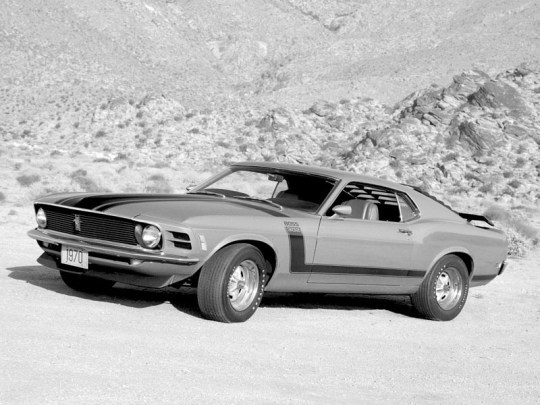
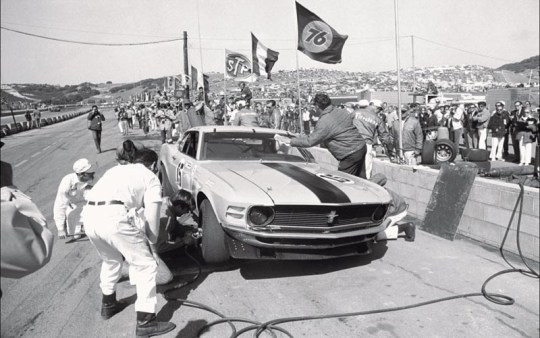
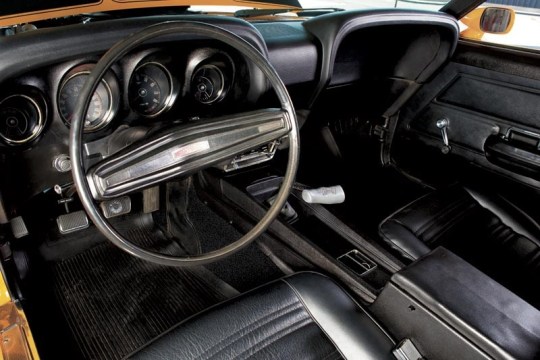
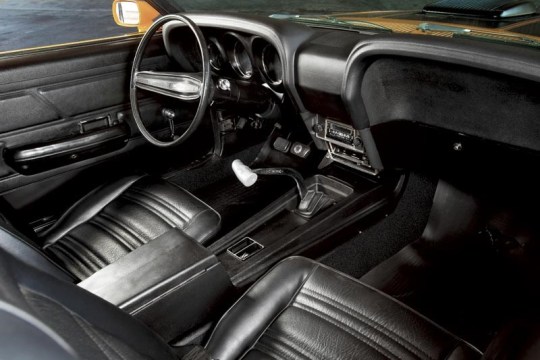



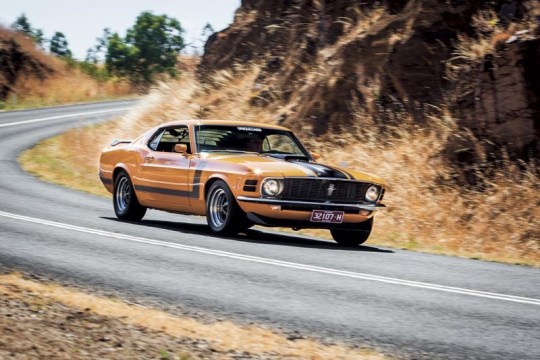

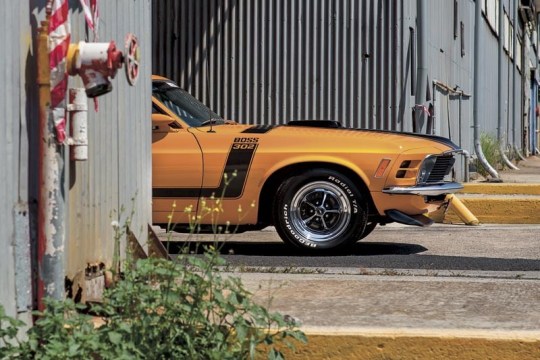
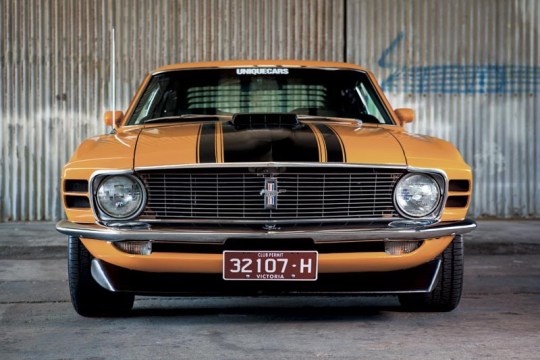

FORD MUSTANG BOSS 302
BOSS-A-NOVA!
They called it The Boss and for two short years it ruled the muscle car scene in the US, establishing itself as one of the greatest road and race cars of the era. Now, it’s one of the most collectible.
In 1960s US street lingo, if something was ‘boss’ it was cool, tough, the best. And the 1969 Boss 302 Mustang wore its badge with pride. It launched just four and a half years after the first Mustang was revealed to critical acclaim and record sales. Yearly updates to keep Mustang fresh in the face of tough new challengers from General Motors and Chrysler (particularly the Camaro) resulted in the once lean and pretty ’Stang muscling up, both in body shape and under-bonnet brawn, and the 1969-70 Boss models were the zenith of Mustang styling.
Thereafter, Mustangs became increasingly bloated and anaemic as the 1970s fuel crisis and stricter pollution laws cut horsepower and stylists lost their way; the rippling flanks and thrusting nose of the late 60s/early 70s cars gave way to boxy, bland designs. That early look would not be recaptured until 2005, when new Mustangs were given retro styling.
The Boss 302 was launched at the same time as its big-block brother, the Boss 429. Both were positioned as competition specials; Ford wanted to homologate its 302-cuber for Trans-Am and the 429ci monster for NASCAR. In fact, Ford went wild with engines between 1969-70, offering nine V8s – the ‘economy’ 302, 351 Windsor, 351 Cleveland, 390, 428 Cobra Jet, 428 Super Cobra Jet, 429 ‘wedge’, Boss 302 and Boss 429.
For the Boss 302, Ford’s high-compression 302ci small-block V8 was beefed up with four-bolt main bearing caps and redesigned ‘Cleveland’ cylinder heads with bigger inlet and exhaust valves, and ports that allowed the engine to breathe more efficiently.
These ‘semi-hemi’ heads were based on the Ford 427ci racing engine’s combustion chambers, and a balanced forged steel crankshaft and forged steel conrods allowed the engine to handle high rpms for sustained periods. A single 780cfm four-barrel Holley carburettor sat atop a high-rise aluminium inlet manifold, while a dual-point distributor, high-pressure oil pump, windage tray and screw-in welch plugs were further indications of its competition intent.
A rev limiter was fitted, progressively cutting spark from 5800rpm to 6150, but it was easily bypassed and the Boss 302 could reportedly keep making power up to 8000rpm with minor mods. In the muscle car marketing war, Ford claimed a peak horsepower figure of 290bhp at 5800rpm (the same as the Camaro Z/28), but that was extremely conservative.
Two four-speed manual Top Loader transmissions were available: a wide-ratio ’box with Hurst shifter more suited to street and strip use, and a close-ratio unit for racing. Adding to the race or road options list were four diffs: the stock 3.5:1 nine-inch, Traction-Lok 3.5:1 and 3.91:1 and the No-Spin 4.30:1 built by Detroit Automotive. Axles and diff centres were also strengthened to take the loads.
Suspension was also race-inspired with heavy-duty springs, shocks and sway bar up front, and Hotchkiss-style rear suspension with heavy-duty leaf springs, sway bar and staggered shock absorbers. The left-hand shock absorber was bolted behind the axle and the right in front, to reduce axle tramp under acceleration. Amazingly for such a high-performance car, braking was still only discs and drums with power assistance.
Ironically, the Boss 302’s sexy shape was styled by former General Motors designer Larry Shinoda, who is often credited with coming up with the Boss moniker. When asked what he was working on, he replied, "The boss’s car", a reference to new Ford president ‘Bunkie’ Knudson, who was also ex-GM and had recruited Shinoda to Ford.
While the wheelbase remained unchanged at 2740mm, the ’69 Mustang was 96.5mm longer overall to accommodate all the V8s offered, although the big-blocks still had to be shoe-horned under the bonnet. Shinoda’s ’69 Boss 302 was also one of the first production cars to offer an optional front air dam and adjustable rear wing, and his use of high-contrast black panels, rear window SportsSlats, and go-faster stripes made the Boss a real attention-grabber. The ’69 was also the only quad-headlight Mustang, a feature that was dropped for 1970 models.
In 1970, American Hot Rod magazine dubbed the 1970 Boss 302 as "definitely the best handling car Ford has ever built", while the conservative Consumer Guide called it "uncomfortable at any speed over anything but the smoothest surface". Unique Cars resident Mustang maniac, ‘Uncle’ Phil Walker, never read the Consumer Guide review, but even if he had it wouldn’t have stopped him buying the immaculate 1970 Grabber Orange Boss 302 you see here.
Phil already has his beloved 1966 Shelby GT350H, but the Boss 302 really got his Mustang juices percolating. And he wasn’t alone, because the first Boss he saw, some 43 years ago, is still one of Australia’s most iconic race cars: Allan Moffat’s Trans-Am racer. Phil remembers it clearly.
"I saw Moff race it Calder and I was inspired to own one," Phil recalls. "It was the most aggressive-looking car; its stance was something you had to see to believe. It looked like it was doing a million miles per hour when it was parked.
"My Boss was originally a one-owner car and I bought it from a friend of mine in California, Dave, who I also bought my Shelby GT350H from 19 years ago. Dave found it in a barn with a blown engine, but in otherwise pretty good condition.
"The lady who owned it from new didn’t realise it had a high-compression engine and had run it on standard fuel. When it blew up she just parked it.
"Dave did a nut-and-bolt restoration over two years, then put it up on his hoist. He didn’t want to sell it, but I got my way in the end – unfortunately he had the last say on the price (laughs). I didn’t even bother to test drive it; I knew it was a good car. It had 21 (new) miles on the odo when I picked it up and only 54,000 miles in total."
Since then, Phil has only put a couple of hundred miles on the car, but that’s enough for him to have bonded with it.
"I’ve only had the Boss since January and it’s growing on me. It’s different to the Shelby. It’s bigger and very low.
"The engine is incredible. Dave is one of the best engine builders in California and when he rebuilt the 302 he changed the cam spec. US camshaft technology was okay in the 60s and 70s, but if you had a big-cam muscle car they wouldn’t idle and they were terrible for driving in cities.
"A proper Boss engine can rev to 8500rpm all day and for a V8 that’s pretty serious. But they’re not renowned for low-down torque; it starts coming on from 3500rpm. My car still has a solid-lifter cam, but it pulls like a train from 1200rpm in top gear and I can drive it around at 1500rpm in top all day.
"It’s got the four-speed close-ratio Top Loader with the long first gear and with a 3.7:1 rear end it does about 55-60mph (89-97km/h) in first gear. It bloody goes!"
Phil is a fussy bugger and his cars have to look just right, so Russell Stuckey from Stuckey Tyres has ordered him a set of genuine 15 x 8 Minilites from England to replace the standard Magnum 500s.
"I want it to look like the Parnelli Jones race car, and to get the stance I want it’s going to have 275/60s on the rear and 255/60s on the front. At the moment it’s a pretty car that is tough, but I want a tough car that looks tough. And that’s all I’m going to do to it."
After his first real fang in the Boss, Phil felt that his Shelby would be half a lap in front at the end of a 10-lap sprint at Sandown, but now thinks the Boss would be quicker. We might have to put both to the acid test one day. What do you mean "no way", Phil?
It was a nervous Phil who turned up at a Melbourne storage facility in January to pick up his new Boss 302. So nervous, in fact, that he took along Unique Cars art director Ange and a sturdy tow rope – just in case.
The storage people were even more apprehensive – they had been warned about just how anal he is with his cars, as he explains: "The lady there said, ‘You must be pretty fanatical because we’ve been given strict instructions that no one is to touch the car except you’." Fortunately, the car arrived in pristine condition.
"I was pretty excited, I’d been waiting for seven weeks," Phil laughs. "I took the car cover off it, fired it up, and it drove home like a brand new car. It was as good as I thought it would be. I spent the next three hours washing it."
Sounds like our Phil.
PARNELLI AND ME
Three years ago, my mate Dave and I were invited to a Trans-Am dinner at Portland International Raceway where Dave was racing his 1970 Trans-Am Boss 302 and I was crewing for him.
When we were driving there we noticed this black Mercedes following us. When we stopped it did too and this bloke got out and said, "I noticed you guys back at the hotel. You’re going to the Trans-Am dinner aren’t you? I’m lost." It was Parnelli Jones!
I jumped in with him and when we got there I ‘invited’ myself onto Parnelli’s table, which also included Pete Brock – the guy who designed the Shelby Daytona Coupe. There was I, Mr Nobody, with all these US racing heavies, but Parnelli was a real gentleman, not up himself in any way.
The next day they had free lap time at Portland and, when I saw Parnelli there with Ford’s new ‘Parnelli Jones’ Boss 302 tribute Mustang, I asked if there was any chance of a ride and he said jump in. We did 10 laps and the guy hadn’t lost any of his ability; my eyes were getting bigger and bigger coming into the corners.
It was a great experience that I’ll never forget. – PW
IT's MINE...
Moff’s Mustang is probably the most iconic Australian racecar and after seeing it I was inspired to own a Boss Mustang.
Then, about 25 years ago, I went to Pebble Beach in Monterey for the first time and saw a 1970 Grabber Orange Boss 302, which was the colour Parnelli Jones raced in Trans-Am. That day I knew I had to own a Boss. It was the car I’d always wanted after my Shelby, which was my lifelong dream car.
My Boss 302 is fully optioned, including the Shaker, extra side mirror, tacho and rear louvres, and it’s got a lot of wow factor. When you drive down the freeway, you get the thumbs-up from all sorts of different people. I think it’s the colour.
It’s closer to show standard than my Shelby. It’s got the paint marks on the tailshaft and all the little concours details, but I’m never going to show it; I’m not into that.
The 1969/70 body shape is still the best. Ford got it right then, but lost the plot after that and it’s reflected in their collectibility today. – PW
#car#cars#muscle car#american muscle#ford#FORD MUSTANG BOSS 302#ford mustang#boss 302#MUSTANG BOSS 302#mustang
161 notes
·
View notes
Text




Street beast. David’s 1969 Chevrolet Camaro Z/28 was built by the team at Goolsby Customs. It’s powered by a 650+HP Pace Performance supercharged LT4 mated to a Bowler Performance Transmissions-prepped Tremec T56 Magnum 6-speed manual transmission and rides on a Roadster Shop SPEC chassis, Baer brakes, 245/35ZR18 & 325/30ZR19 Michelin Pilot Sport 4S tires, and 18x8/19x11 Forgeline forged three piece CR3 wheels finished with Tankard Gray centers, Polished outers, & optional Tall Center Caps! See more at: https://www.forgeline.com/customer-gallery-david/cgk2683
🇺🇸🇺🇸🇺🇸
#forgeline#forgelinewheels#forgedwheels#customwheels#CR3#ForgelineCR3#notjustanotherprettywheel#doyourhomework#madeinUSA#chevrolet#chevy#camaro#69camaro#goolsbycustoms#protouring
25 notes
·
View notes
Text

1969 Z-28 Camaro
94 notes
·
View notes
Text

383-Powered 1969 Chevrolet Camaro Z 28 RS 5-Speed
27 notes
·
View notes
Text

1969 Z-28 1983 World championship drag racing yearbook NHRA
9 notes
·
View notes
Text

6 notes
·
View notes
Text
1969 Chevrolet Camaro in Palmetto, Florida
The 1969 Chevrolet Camaro is like a superstar among old cars! It's famous for its awesome looks, strong power, and being really popular. Let's look into why people love this classic car so much!




A Super Cool Look:
The 1969 Camaro looks super cool even today! It's sleek and has a tough appearance that makes people go "Wow!" You could get it as a regular car or as a convertible, and you could choose cool stuff like stripes, spoilers, and special wheels to make it stand out even more.
Strong and Powerful:
Under the hood, the '69 Camaro had lots of options for engines. Some were small, some were huge, but all of them were strong! The fastest versions, like the SS and Z/28, were like race cars for the streets. They were really quick and handled great!
Racing History:
The '69 Camaro wasn't just for driving around town - it was also a racing star! People raced it on tracks all over America, and it won a lot. Whether it was on a drag strip or a road course, the Camaro showed everyone it was a champion.
Still Loved Today:
Even though it's been over 50 years since it came out, people still love the 1969 Camaro. Its cool looks, fast speed, and racing wins have made it a legend. You can still see it cruising the streets or shining at car shows, reminding everyone why it's such an awesome car.
The 1969 Chevrolet Camaro is a really special car that people still love today. With its cool style, powerful engines, and winning history, it's no wonder it's so famous! As long as there are people who love cars, the '69 Camaro will always be remembered as one of the coolest cars ever made.
Did you know the Camaro was nicknamed the Mustang Eater?
Learn More:
3 notes
·
View notes
Text





Chevrolet Camaro Z/28 RS 1969. - source Amazing Classic Cars.
70 notes
·
View notes
Photo

New Post has been published on https://fastmusclecar.com/exploring-the-timeless-appeal-of-classic-vintage-muscle-cars/best-muscle-cars/
Exploring the Timeless Appeal of Classic Vintage Muscle Cars
In the fast-paced world of automobiles, where each passing year brings forth innovations and modern designs, a class of vehicles seems to defy the sands of time. With their roaring engines and iconic designs, classic vintage muscle cars maintain an enduring appeal that transcends generations. This article explores the reasons behind the timeless allure of these automotive legends.
The Birth of an Icon
Classic muscle cars arose in the mid-twentieth century, fueled by post-World War II optimism and a thirst for speed. Sensing a demand for excitement on the road, American automakers developed muscle cars. The Ford Mustang, Chevrolet Camaro, and Dodge Charger emerged as trailblazers, representing the spirit of defiance and power that defined a period. These brands are characterized by unique engine and body parts that ultimately make the automobile stand out. You can see more info here about various automotive products from these brands.
The allure of classic muscle cars lies in their performance and their symbolism. These vehicles were born when the open road symbolized freedom and driving was not just a means of transportation but an expression of individualism and adventure.
Some of the most iconic classic muscle cars that have left an indelible mark on the industry are:
Ford Mustang
Model Years: 1964-1973
The Ford Mustang is an American icon and one of the pioneers of the muscle car era. Its introduction in 1964 created the “pony car” class, offering a blend of style, performance and affordability. The 1967 Shelby GT500 is particularly revered, featuring a powerful 428 Cobra Jet engine.
Dodge Charger
Model Years: 1966-1974
The Dodge Charger is known for its bold design and powerful engines. The second-generation Charger (1968-1970) is often considered the pinnacle, with the iconic “Bullitt” Charger R/T and the monstrous Charger Daytona, designed for NASCAR dominance. The 1969 Charger, immortalized in movies like “The Dukes of Hazzard,” is particularly iconic.
Chevrolet Camaro
Model Years: 1967-1969
The Chevrolet Camaro is another heavyweight in the muscle car arena. The first-generation Camaro, especially the SS and Z/28 models, is celebrated for its aggressive styling and high-performance options. The 1969 Camaro ZL1 is one of the most sought-after muscle cars, boasting an all-aluminum 427 cubic-inch engine.
Pontiac GTO
Model Years: 1964-1974
Often credited as the first true muscle car, the Pontiac GTO paved the way for the revolution. The early GTOs, especially the 1966 model with the potent Tri-Power carburetion system, are highly coveted. The GTO embodied putting a big engine in a midsize car, creating a formula that defined the muscle car ethos.
Model Years: 1964-1972
Chevrolet Chevelle SS:
The Chevelle SS is a classic example of Chevrolet’s prowess in crafting muscle cars. The SS (Super Sport) package, available on various Chevelle models, turned these midsize cars into high-performance beasts. The 1970 Chevelle SS with the LS6 454 cubic-inch V8 is legendary, boasting one of the highest factory horsepower ratings of the era.
Design Elegance that Stands the Test of Time
The timeless design of classic muscle vehicles is one of their distinguishing features. The sleek forms, forceful poses and eye-catching color palettes distinguish them from their counterparts. The union of form and function in these vehicles reflects a time when style was just as vital as substance. Even in the middle of a sea of modern automobiles, the timeless beauty of their design guarantees that these cars remain head-turners.
Classic muscle cars are not just machines but works of art on wheels. The aesthetic appeal of their design is not subject to the whims of passing trends, making them a testament to the notion that true beauty is eternal.
Nostalgia and Cultural Significance
Beyond their mechanical prowess, classic muscle cars carry a cultural significance that adds layers to their timeless appeal. These vehicles are not just relics of the past; they are living reminders of a bygone era. Nostalgia plays a pivotal role in their enduring popularity, as they evoke memories of when the automobile represented more than just a mode of transportation.
Movies, music and popular culture have all contributed to the mystique surrounding classic muscle cars. From iconic scenes in films to the rock ‘n’ roll tunes that echoed through the radio waves, these cars became intertwined with the cultural fabric of their time. Owning a classic muscle car is not just about having a vehicle; it’s about possessing a piece of history that encapsulates the spirit of an era.
Conclusion
In a world where trends come and go and technology advances relentlessly, classic vintage muscle cars stand as stalwart guardians of a bygone era. The birth of these iconic vehicles marked a turning point in automotive history, and their timeless allure continues to captivate enthusiasts across the globe. From the engine’s roar to the elegance of their design, classic muscle cars are more than just vehicles; they are living legends, embodying the spirit of an age that refuses to be forgotten.
4 notes
·
View notes
Photo
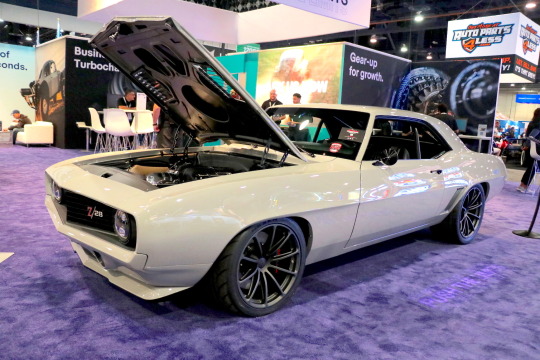

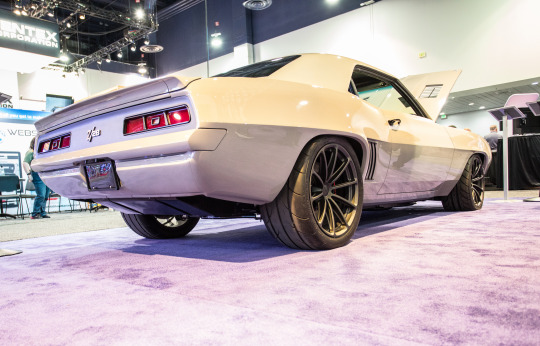
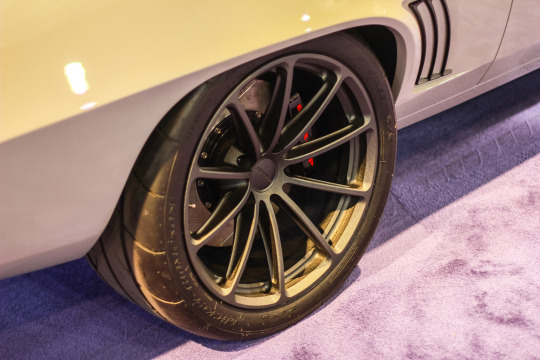
Curves in all the right places. This “ZULU/28" 1969 Chevrolet Camaro Z/28 was built by Streamline Custom Designs and debuted in the ebay motors booth, at the 2022 SEMA Show. It’s powered by a 630+HP Mast Motorsports LS7 mated to a Bowler Performance Transmissions-prepped Tremec T56 Magnum 6-speed manual transmission with an S1 Sequential shifter and rides on Detroit Speed suspension, Baer brakes, and 18x10/19x11 Forgeline one piece forged monoblock GT1 5-Lug wheels finished in Pearl Gray! See more at: https://forgeline.com/customer-gallery/streamline-custom-designs
#forgeline#forgelinewheels#forgedwheels#customwheels#forgedmonoblock#GT1#ForgelineGT1#5Lug#notjustanotherprettywheel#doyourhomework#madeinUSA#chevrolet#chevy#camaro#69camaro#Z28#ZULU28#streamlinecustomdesigns#protouring#SEMAShow#SEMA22
60 notes
·
View notes
Text
FRANCISCA DE GAZMIRA
Pablo Deluca
FRANCISCA DE GAZMIRA (La Palma)
Personaje femenino perteneciente al bando de Adirane cautivada antes de 1489, año en que ya se documenta la venta de esclavos palmeros en Valencia. Fue obligada a ser intermediaria entre los suyos y el Cabildo de Gran Canaria y el gobernador Maldonado, en los años precedentes a la invasión castellana de la isla de Benahuare:
“Entre finales de 1491 y abril de 1492, Maldonado, el Obispo de Canarias y el Cabildo catedral, prepararon la conquista de Tenerife y La Palma. Remitieron como emisario a Francisca de Gazmira (palmera), ama del regidor Diego de Zurita, la cual convenció, (engañada por los cristianos que le prometieron su libertad) a los principales jefes palmeros llevándolos a Gran Canaria donde fueron bautizados y devueltos a su isla con la consigna de hacer proselitismo entre su gente. El camino quedaba acondicionado para el taimado y ambicioso Alonso Fernández de Lugo” (F. Morales Padrón, 1978).
Francisca de Gazmira se constituye, después de la invasión de La Palma en 1493, en la defensora de sus hermanos isleños esclavizados ante la justicia española. Aparece también como Francisca de La Palma denunciando a Lugo al que acusa de vender como esclavos a 22 muchachos palmeros como rehenes de los convertidos y cautivar a cien más, matar a dos cabezas del bando territorial, impedirle salir de la isla para defender sus derechos, agraviar a sus parientes y robarles su ganado (Dto. del 28-02-1495, E. Aznar Vallejo, IEC, 1981).
Las Crónicas históricas refieren la resistencia y rebelión de los benahoritas al esclavismo de Lugo:
“Los palmeros, como vieron a Alonso de Lugo fuera de la isla, levantáronse más de trescientos palmeros, los cuales hacían mucho daño. Desto fue avisado Alonso de Lugo, que estaba en Tenerife(…) y mandó por capitán de la isla de La Palma, para que la quietase, a Diego Rodriguez de Talavera (…) y con ellos, después de algunos reencuentros que tuvo, los desbarató, aunque le costó algunos soldados que le mataron y muchos heridos” (Abreu Galindo, 1602, Ed. 1977).
Más adelante, en 1500, una vez incorporada la isla a la Corona española, Francisca de Gazmira presentó un litigio en la Corte en defensa de los palmeros bautizados de los bandos de paces y esclavizados por Lugo, que intentó sobornarla sin éxito para anular su denuncia:
“1500 Julio 25. Granada. Iniciativa a don Juan de Silva, conde de Cifuentes, alférez mayor y miembro del Consejo, para que determine en el pleito de algunos canarios, que dicen ser libres y estar sometidos a servidumbre(…) estando suficientemente probado su justicia por el hecho que doña Inés Peraza diese a Francisca de Gazmira 60.000 maravedís para que no continuase el litigio…” (E. Aznar Vallejo, “Dtos. canarios en el Registro del Sello”, 1446-1517, IEC, 1981).
En relación al hábitat de Francisca de Gazmira, que dio origen a su antropónimo, el siguiente documento aclara su ubicación:
“Sevilla, 27 de junio de 1500…estando en las yslas de La Palma e Tenerife, puede aver syete años poco más o menos, diz que tomó por propia abtoridad treynta e tres vecinos de la ysla de La Palma del bando de Gazmira, a donde dicen las cuevas de Herrera, y los cabtivó a todos e a sus mujeres e fijos e familia, seyendo como diz que heran christianos e de pazes…”(A.Rumeu de Armas, “La política indigenista de Isabel la Católica”, 1969)
Gazmira < lit:”wa s iemira”=”este (lugar) a (hacia) lo abierto”, del vb.“ar, iura”(R)=”abrir” y de la variante participal “mar, iemira”=”estar abierto” (Ch. Foucauld, 1951, dial. tuareg Ahaggar). Evolución: “wa s iemira > wasmira > guazmira > gazmira”, por contracción, conversión labio-velar “wa>gua” y cambio “s>z” en el sistema fonético del dialecto tahaggart. Podría asociarse pues a un lugar abierto o espacioso después de traspasar un lugar estrecho. Si nos atenemos a la información que transmiten las Crónicas históricas se confirma la ubicación y las dos entradas o pasos a la Caldera de Taburiente:
“Tazacorte y Los Llanos, hasta donde dicen las Cuevas de Herrera, Amagar, Tijuya, todo este espacio y término de tierra llamaban antiguamene los palmeros en general Adirane (…) la otra entrada, más común y frecuentada, se llama Adamancasis, que es por las Cuevas que dicen de Herrera” (Abreu Galindo, 1602, Ed. 1977).
La voz Adamancasis < “at amânkad tizi”=lit:”el gran capitán el paso” o “el paso del gran capitán” (en relación a Atanausu, jefe del cantón de Azeró), de donde “amânkad”=” hombre que va delante, capitán”(dial. tuareg Ahaggar) y “tizi”=”paso, desfiladero (dial. kabilio) >”adamancazizi >adamancasis(i)”, por cambios fonéticos “t>d”, “t>z” y “z>s”. Este topónimo se refiere claramente al llamado “Paso del capitán” y, por extensión, a El Paso, municipio palmero. Por consiguiente, las Cuevas de Herrera en las que vivía Francisca de Gazmira se ubicarían al suroeste del núcleo poblacional de El Paso, en territorio “abierto” o llano, próximo al Paso de Abajo y Tajuya y en definitiva en la divisoria de los cantones de Adirane y Azeró, aunque en territorio de Adirane o “bando de paces”.
La política esclavista castellana se produjo antes y al final de la década de los 80 del s.XV en La Palma. Así, en un documento del 9 de enero de 1489 quedaron registrados en el libro de cuentas del Maestre Racional del reino de Valencia los detalles económicos de la venta de una “cautiva canaria de once años, llamada Isabel”. En ese año los invasores castellanos esclavizaban a cientos de indígenas canarios y canarias, una de ellas esta niña palmera de once años, de la que se sabe que su comprador fue un mercader español llamado Miguel de Urrea. El nuevo amo tenía el poder de “venderla, enajenarla y hacer según su propia voluntad, así como a cada señor le es lícito y permitido hacer de sus cosas propias” ("La Conquista de las Islas Canarias a través de las ventas de esclavos en Valencia", V.Cortés, AEA, 1955).

https://www.facebook.com/pablo.deluca.12/posts/pfbid02oZzjoFzEj15ERxzfjz8MXvg1oaipPAtdrp7S9wpyb9wj1cJ377oFL1gUa8ytzNx5l?__cft__[0]=AZVrNQFCa73V-x3uVQnstKirA3S4GvIWx9VXmFiRzpDuyK5MnPHXezbjyHiPw2Wtyh5IThQ2uTLKCJ6SN9p2sFu_rhDytHR0LSo9GV99HcR7bjqLsk2PTcmzvtrtZ048D0JYWTrelh7au5oyXtdTZD9gH4qOTZpdfH4dMoH7zaixZQ&__tn__=%2CO%2CP-R
#pablo deluca#fancisca de gazmira#benahuare#la palma#adirane#esclava#slave#aborigenous#indigenous#culture#history#genocide#native#unesco#united nations#international criminal court#cou penal international#corte penal internacional#esclavos#aborigines#indigenas#cultura#historia#genocidio#nativos#naciones unidas#canarias tiene identidad cultural propia#canarias la colonia mas antigua del mundo#descolonizacion de canarias#canarias
7 notes
·
View notes
Text
@theguythatdraws got me thinking about what kind of car Cato would most likely drive as an adult. Got some good options for him, including a 1969 Z-28 Chevrolet Camaro, a Chevrolet Monte Carlo SS, or even a Jeep or Land Rover. However, he lives in England, which drives on the left hand side instead of the right like in the US. I’m considering cars popular in the UK in the 80s that would be similar to the 80s Monte Carlo vibes.

The 1989 Ford Sierra Sapphire GLS. It’s a four-door saloon car aka sedan built by Ford and sold in the UK. It looks like it belongs in the era but has a sporty edge to it that makes it tick, and it has the space to make it the staple family car. This is the car I think Cato would most likely own during the 1990s. I feel that Penny would help him learn how to drive as her father is a muggle and most likely drove too. She would also get a license as well.
9 notes
·
View notes